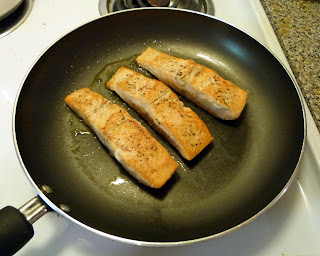Happy Groundhog Day, my dear readers. With six more weeks of winter upon us, you'll have lots of time to stay indoors and cook some great food. Today's recipe is long overdue. Frittata is one of the first things I learned how to make; and it's easy and incredibly versatile. I like to think of it as a cross between an omelette and a pizza, and the result is wonderful.
There isn't much of a science to frittata. You can put whatever ingredients you have in it. In college I even made a frittata with General Tso's Chicken from the local take-out. It was pretty damn good, too. That said, don't think of your frittata as a means to clean out absolutely everything in your fridge. My advice is to keep it simple enough where each individual ingredient can still shine.
Ingredients
- 10 large eggs
- 1/2 onion
- 4 - 6 mushrooms
- 1/3 pound ground pork
- 1 - 2 big handfuls spinach leaves
- 1/2 cup diced tomatoes
- 1/3 - 1/2 cup grated gruyère cheese
- Grated Parmiggiano-Reggiano
- Dried basil and oregano
- Garlic powder
- Salt and pepper
- Olive oil
Instructions
As with
potstickers, your frittata will be much more successful in a non-stick pan. For this recipe, use a large pan (mine is 11 inches across). With smaller pans, you can reduce the recipe to 6 eggs and less of everything else.
Start by heating olive oil in the pan, medium heat. Dice the onion and cook until translucent. While onions are cooking, thinly slice the mushrooms and add those in, too. Turn the heat up a bit. Once mushrooms and onions are slightly browned, add pork and brown this as well. Add spinach and cook down. When you first put the spinach in, it will look like a lot, probably covering your whole pan and heaping up, too. It shrinks a lot when cooked. Once the spinach has reduced in size, add tomatoes and stir together. Season with salt, pepper, and garlic powder. Generously add basil and oregano.
Crack the eggs into a bowl and beat with a fork. Once the above steps are completed, make sure the ingredients are evenly distributed in the pan and pour in the eggs. Next, add the gruyère. You can substitute other cheeses if you prefer, but I like the flavor of gruyère and it melts well. Stir the cheese into the mixture.
Now is a good time to turn on your broiler in preparation. Let the pan sit on the heat for several minutes, allowing the bottom to cook and solidify. Periodically lift up the cooked bottom with a rubber spatula to let the raw egg run down to the bottom and cook. Once the whole thing is starting to solidify, but the top is still runny, sprinkle a little grated Parmiggiano-Reggiano over the top and put the pan under the broiler. Cook until the top hardens and browns. Test for interior doneness by poking at it with your finger. If there is a lot of give, it needs a little more time. If the top is cooking too fast, consider moving the rack down a notch.

When done cooking, slide your spatula around the edges of the pan and underneath the frittata to loosen. With a good non-stick pan, it should come right out. Position a plate nearby, and shake the pan to slide it out. Cut into wedges with a pizza cutter or sharp knife. You want to take it out of the pan before cutting to avoid damaging the non-stick surface. This recipe should comfortably feed three, more if you have some bread with it.









































